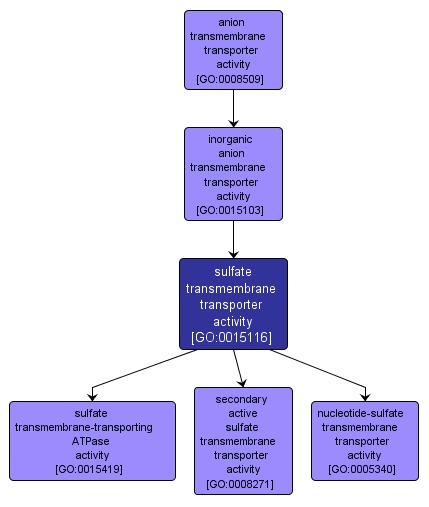GO TERM SUMMARY
|
| Name: |
sulfate transmembrane transporter activity |
| Acc: |
GO:0015116 |
| Aspect: |
Molecular Function |
| Desc: |
Catalysis of the transfer of sulfate ions (SO4 2-) from one side of a membrane to the other. |
Synonyms:
- sulphate transporter activity
- sulfate permease activity
|
|

|
INTERACTIVE GO GRAPH
|














